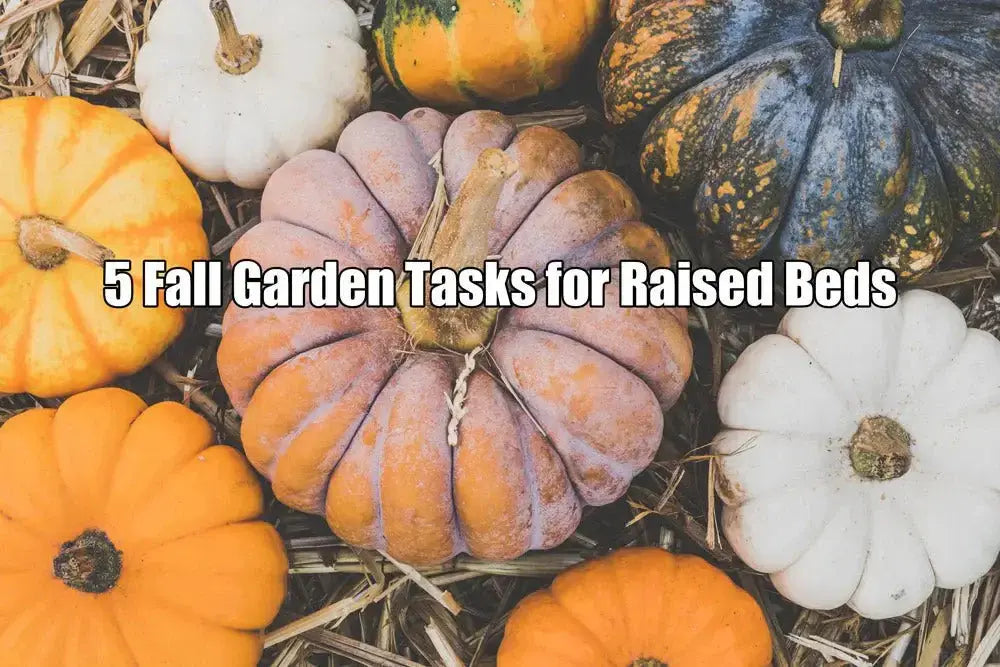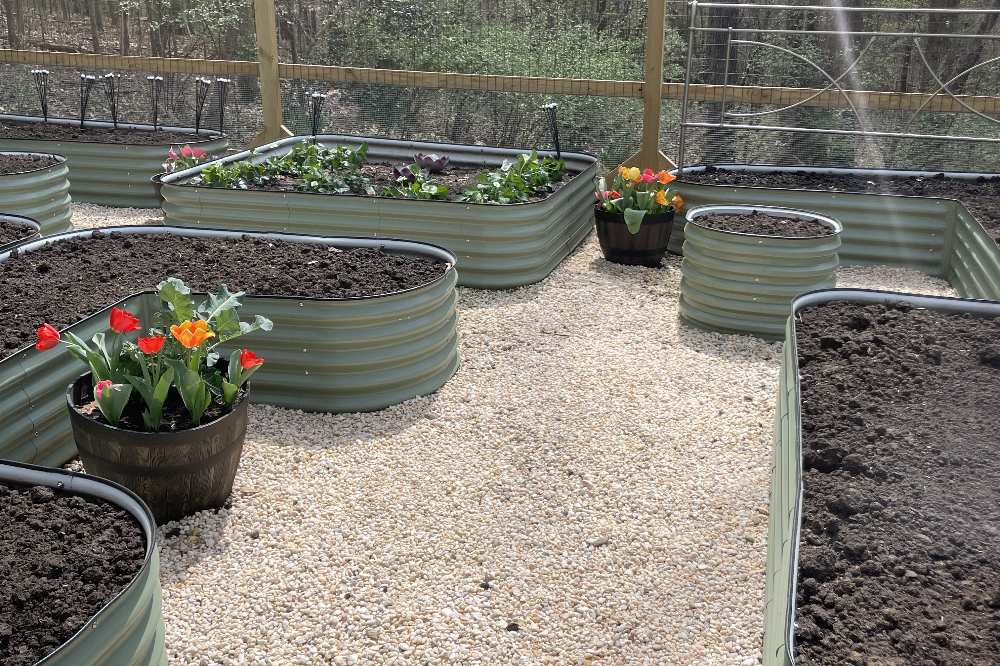Boost Productivity with A Guide to Raised Garden Bed with Cover
Raising a healthy and vibrant garden is an achievement every gardener aspires to attain. This art form requires a key understanding of your plants, the quality of your soil and, most importantly, the environment in which your plants grow. Raised garden bed with cover revolutionize conventional gardening by offering safe protection and a conducive environment for the healthy growth of your plants.

Benefits of Using a Raised Garden Bed Cover System
Protecting Against Harsh Weather
The primary function of a vegetable garden covers is to protect the plants from harsh weather conditions. Whether it’s intense sunlight during the summer or chilling winds in the winter, the cover system acts as a shield against these extreme conditions, keeping your plants safe and ensuring their healthy growth.
Pest Prevention
These systems are designed to keep harmful pests and insects at bay, thereby preserving the health of your plants and increasing their yield.
Temperature Regulation
These plant protection covers help in creating a balanced micro-climate for your plants. They act as insulators during cold seasons, preserving heat and preventing frost. These cover systems can provide shade during hotter seasons, protecting plants from overheating.
Moisture Management
The cover systems maintain a balanced moisture level in the soil, ensuring that your plants don’t dry out or get overly saturated. They can even protect your soil from excessive rainfall.
Increases Gardening Season
Greenhouse covers can help gardeners start their planting season earlier in the spring and extend it into the fall, helping you get the most out of your gardening efforts. If you want to Diy greenhouse, you can consider the VEGEGA's cover system.
How to Clean Your Greenhouse Cover System
Keeping your greenhouse cover system clean is crucial for the health and productivity of your plants. Providing them a clean and tidy environment not only improves their lifespan but also increases their yield. Here's a step-by-step guide on greenhouse gardening.

Gather Your Cleaning Equipment
You will need a bucket, warm water, mild soap or detergent, a soft brush or sponge, and a dry towel or cloth.
Remove Loose Debri
Start the cleaning process by removing any loose leaves, dirt, or debris from the cover. You can use a soft brush or broom for this process.
Prepare a Cleaning Solution
Fill your bucket with warm water and add a few drops of mild soap or detergent. Avoid harsh cleaners as they might damage the material of the cover.
Clean the Cover and the Frame
Soak your soft brush or sponge into the cleaning solution, then gently clean the surface of the cover, moving from top to bottom. Apply slight pressure on areas with stubborn dirt or algae. Remember to clean both the interior and exterior of the cover, as well as the metal frame.
Rinse
After cleaning, rinse off the soap from the cover and the frame using a garden hose with a gentle spray setting. Ensure all soap residues are removed as they can potentially harm the plants.
Dry the Cover System
Once the cover is thoroughly rinsed, use a dry towel to blot out any excess water on the cover. If possible, allow the cover to air dry completely before covering the greenhouse.
Check for Damage
While cleaning, it's also a good opportunity to inspect your cover system for any damage, holes, or wear. Small holes or tears can be patched, but significant damage may require replacing the cover. If spot minor scratches on the metal frame, there’s no need to worry about rust issues. The metal frame of Vegega’s cover system is made of the same material as the metal garden bed. Even with small scratches, it will not rust and will not affect its lifespan.
Read about the material of the metal raised garden beds in VEGEGA.
A Comparison of Net Cover and PE Cover
Greenhouse covers play an essential role in determining the growth and health of your plants. Among the many types of covers available, Vegega provides Net Covers and Polyethylene (PE) Covers. Here, we'll compare and contrast these two types of covers to give you a clearer understanding of their uses and benefits.
Raised Bed Net Cover
A raised bed net cover is essentially a mesh that is installed over your garden bed to protect your plants. The large advantage of using a net cover lies in the fact that it allows air, sunlight, and water to reach your plants while providing a protective shield against pests.
Advantages
- Improved Air Circulation: Net covers provide excellent ventilation, allowing your plants to breathe easily.
- High Sunlight Penetration: These covers allow plenty of sunlight to reach your crops, supporting photosynthesis.
- Pest Prevention: Net covers are effective in keeping pests and insects away from your crops.
Disadvantages
- Limited Weather Protection: Net covers offer limited protection against rain, frost, or harsh sunlight which may not be enough for certain delicate plants.
Raised Bed PE Cover

Also known as a plastic film, the raised bed PE (Polyethylene) cover is a thick plastic sheet that covers the raised bed. It contributes to an increased temperature within the raised garden bed, replicating a mini greenhouse effect, and is excellent for growing sensitive plants that need controlled conditions.
Advantages
- Excellent Weather Protection: PE covers can withstand harsh weather conditions such as intense sunlight, heavy rains, or frost.
- Temperature Regulation: PE covers are excellent insulators. They trap heat and create a warm environment, which is perfect for growing a variety of plants, even in colder seasons.
- Moisture Control: These covers prevent water evaporation, maintaining optimal soil moisture levels.
Disadvantages
- Requires Ventilation: As PE blocks air movement, it is essential to manually control the ventilation to prevent plant diseases due to air stagnation.
- Lower Sunlight Penetration: Since PE is a thicker material, it may limit the amount of sunlight reaching the plants compared to a net cover.
Cleaning and Maintenance Tips for Metal Garden Bed Cover Systems
The selection of the best liner for your metal raised garden bed is a critical decision that influences the success of your gardening pursuits. By choosing the right liner and following proper installation and maintenance practices, you can enjoy the benefits of reduced weed growth, soil erosion prevention, and enhanced moisture retention. Metal garden beds, when equipped with quality liners, provide a durable and cost-effective solution for gardeners of all levels of experience.
Regular Inspection and Cleaning
Inspect and clean your metal garden bed cover system periodically. This includes checking for any damages or tears in the cover, which might compromise its functionality. Regular cleaning also prevents the build-up of dirt, dust, and fungus on the cover, which could obstruct light penetration, affect air circulation, and thus impact plant growth.
Avoid Harsh Cleaning Products
When you are cleaning your cover system, refrain from using harsh or abrasive cleaning agents. These can damage the material of the cover, leading to faster wear and tear. Instead, opt for mild soap or a specially formulated greenhouse cleaning product that is safe for the material of your cover.
Protect Covers in Severe Weather
During extreme weather conditions, like heavy snowfall or storm, consider removing the cover or adding extra support to the structure to prevent any damage. The weight of snow or strong winds can be harmful to the vegetable garden covers.
Cycle Between Net and PE Covers
If your system allows, cycling between net and PE covers at different times of the year can improve plant growth. While the PE cover is great for colder seasons for its warmth-trapping propensity, the net cover works well in warmer conditions with its enhanced ventilation and sunlight provision.
Conclusion
Incorporating a raised garden bed cover system into your gardening routine can significantly boost your plants' growth and overall garden productivity. From understanding the benefits of these systems to discovering the difference between net covers and PE covers - every piece of knowledge enriches your gardening experience. Regular cleaning and diligent maintenance of these covers can extend their lifespan and ensure peak performance.



Wow, what a fantastic article! I love how you’ve outlined the benefits, from controlling pests to extending the growing season. I’ve been using raised bed covers for a while and you are on point. My recommendation: https://aussiegardener.com.au/collections/raised-bed-covers